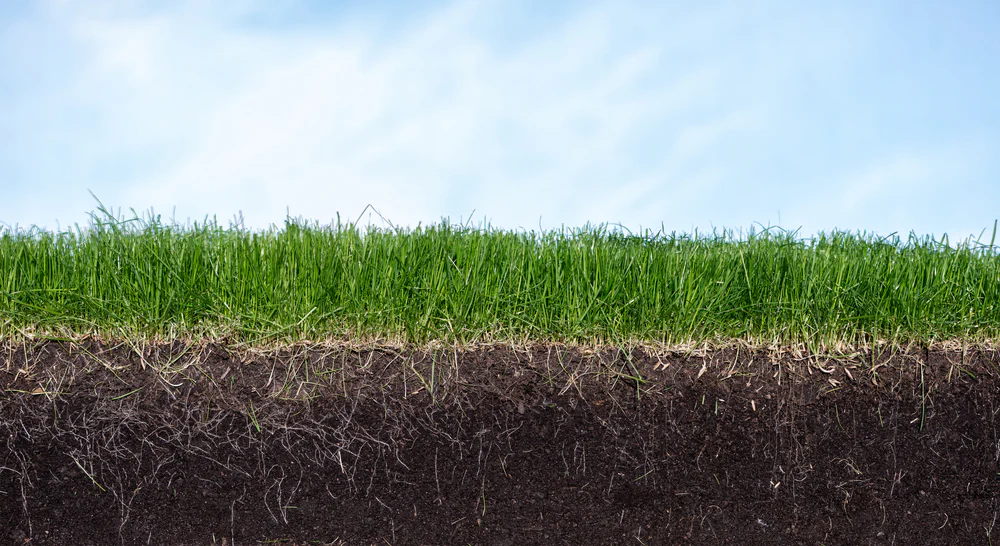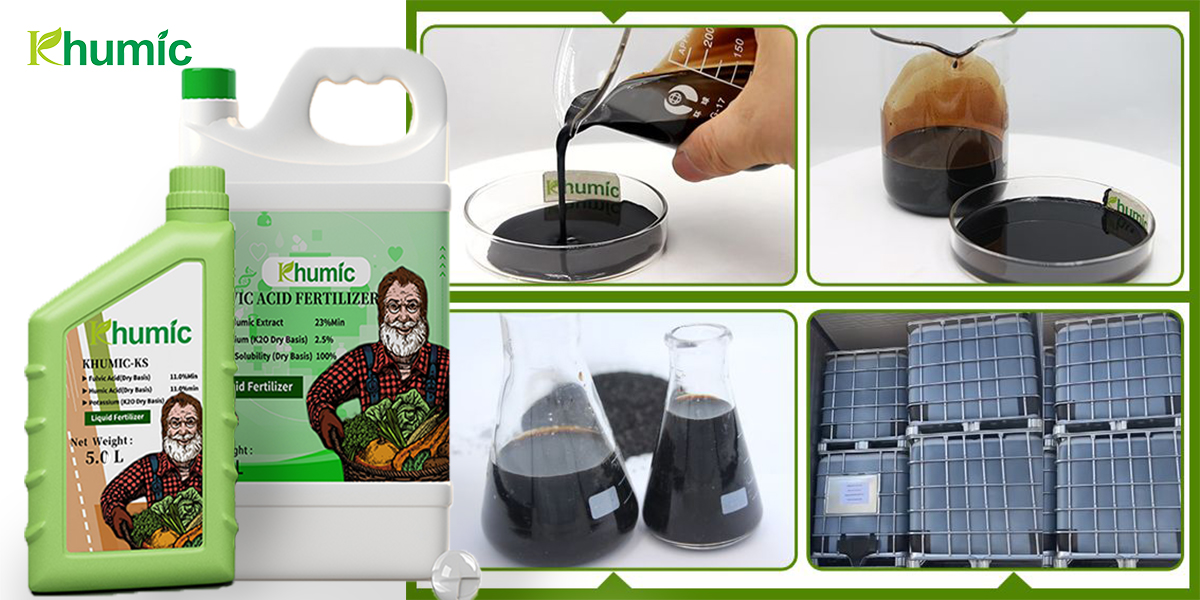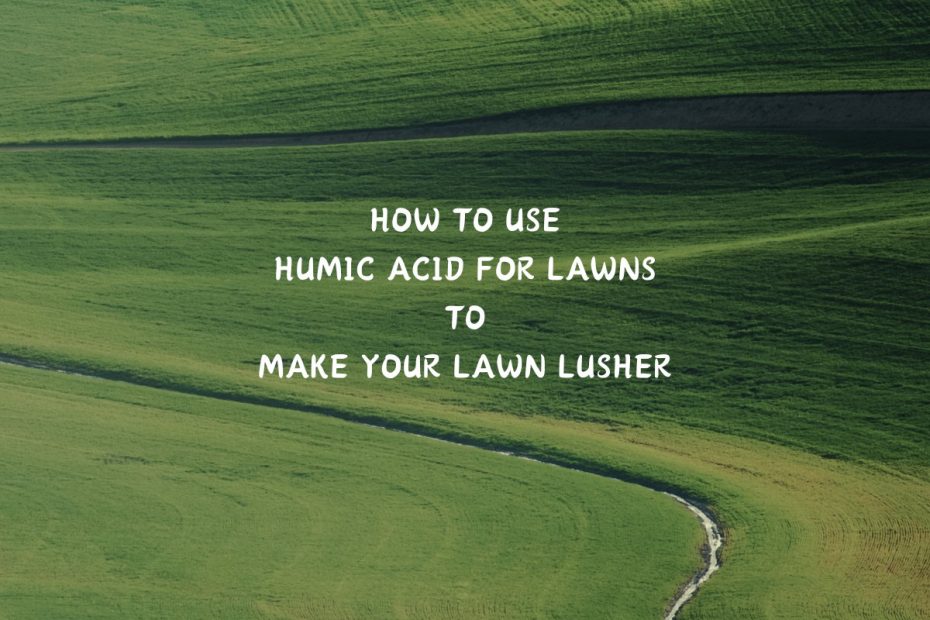Introduction
Picture this: a luxurious emerald lawn that beckons you deeper into its soft green carpet. Good lawn and garden care requires the right combination of nutrients. Have you ever wondered how to deal with the lack of minerals in sandy soil? How to make your lawn greener and lusher without using harmful chemicals? In addition to traditional NPK nutrients, there are a variety of materials that help promote healthy green gardens and lawns, such as humic and fulvic acids…. Now, We’ll explore the ins and outs of how to use humic acid for lawns to transform them into a verdant paradise.
What is Humic Acid and Why Does Your Lawn Need It?
Humic acid(including fulvic acid) is an organic compound derived from decaying plants and is a key component of humus in healthy soil. It is formed from humates that break down from plant and animal matter over time. Helps the soil retain nutrients to provide nutrients to the grass.
Different soils have different levels of humus. For example, there are very few sandy soils. This makes growing lawns on sandy soil more challenging. Likewise, unamended clay soils often find an insufficient supply of humus. However, a clear difference between a lawn rich in humic acid and one deficient in humic acid is readily apparent.
Today, old farmers’ tips for improving soil structure using humic acid fertilizers have become mainstream, and humic acid fertilizers are available in granular and liquid forms in many online stores, including KHUMIC.
Benefits of using humic acid
When considering adding “acid” to their lawn, people often express concern about whether something will burn. However, humic acid poses no threat to your lawn or soil; in fact, it is the key to achieving superior results at a rate that exceeds most other lawn treatments. Humic acid is made up of carbon, oxygen, hydrogen, nitrogen, phosphorus, and sulfur, and the only reason it’s an acid is that it’s a hydrogen-containing substance. If you think of manure as organic, natural, and good for your plants, think of humic acid as microbial manure. Super small, super rich, and super for your soil. (But no bad smell).

- Improve soil structure
The colloidal nature of humic acid acts as a binder, promoting soil aggregation and forming a more porous structure. Enhances aeration and water infiltration, reducing compaction and runoff. Create the best environment for root development.
- Enhance nutrient absorption
Humic acid works by chelating nutrients in the soil, forming complexes that prevent their loss. This helps keep them in contact with plant roots, making them easier for the plant to absorb. Promote green grass vitality.
- Promote microbial activity
Humic acid stimulates beneficial microbial activity in the soil, which breaks down organic matter and releases nutrients in a form that plants can easily absorb. This symbiotic relationship between humic acid and soil microorganisms fosters a healthy ecosystem that supports plant growth and resilience.
- Strengthen defense mechanisms
Stress on your lawn such as drought, heat, pests, and diseases can affect its appearance and health. Humic acid helps relieve these stresses by enhancing the lawn’s natural defenses by improving nutrient availability and water retention.
How to Apply Humic Acid for Lawns
Select fertilizer type (granular or liquid)
First, we need to choose the type of fertilizer based on the specific needs of our lawn.
Liquid humic acid can be used as a page spray and irrigation system and will be quickly absorbed by plants. It is suitable for plants that need immediate supplementation of nutrients and has quick results. However liquids are inherently easier to break down than granules, take less time to eat, and require frequent administration.
Granular humic acid, on the other hand, is often mixed with soil, slowly releasing nutrients over time. Suitable for improving soil fertility and sustainability. However, all granular products require watering and granular humic acid takes longer to break down and bond with the soil, with liquids leading the process.
The amount and frequency of using humic acid for lawns
You may also ask if you can apply too much humic acid to lawns, and the answer is no. Too much humic acid won’t harm your lawn, but it will certainly waste it, and it’s best to follow the application rates recommended on the package.
Applying humic acid in the spring and fall is most beneficial because this is the time when the lawn is actively growing and recovering from seasonal changes. You can apply it every 3-5 weeks while your lawn is in growth mode. Commonly used methods are irrigation system 8-10kgs/ha; foliar spraying 2.4-3kgs/ha; soaking seeds 2kg/1000kg seeds. (Adjust frequency based on your lawn’s specific needs)growsApplication method
The method for applying humic acid for lawns depends on your preference, the product you choose, and the tools you have available.
Liquid Spray Application:
Dilute the humic acid product according to the manufacturer’s instructions. Use a sprayer like a backpack or an irrigation system to spread the solution evenly over the lawn surface. Make sure to cover thoroughly, targeting open areas and around plants.
Granular Application:
Choose a granular humic acid product or fertilizer that contains humic acid, such as KHumic-E+ or KFULVIC-AG. Use a spreader to distribute the granules evenly over the lawn. Water the lawn after application to help the granules dissolve and transfer nutrients to the soil.
Organic Matter Incorporation:
Mix humic acid products with compost or other organic matter. Spread the mixture over the lawn and rake gently into the soil. Water the area to help the organic matter and humic acid mix with the existing soilTest results
After applying humic acid, monitor changes in the color, growth, and overall health of your lawn. Record your observations and, based on your observations, adjust the timing and frequency of humic acid applications to optimize their impact on your lawn. Experiment with different application methods to find what works best for your soil.
Recommended Products
KHUMIC-200 is a 100% water-soluble powder fertilizer containing 70% humic acid and 15% fulvic acid. It works on all lawn types, giving you a beautiful, deep green lawn. It also has 12% potassium to make your grass rhizomes strong and resistant to lodging. Improves lawn resistance to pests, diseases, colds, and drought.

How Quickly Can I See the Effects of Humic Acid?
Many people see visual effects after one or two applications. Humic acid in particular chelates nitrogen and iron in the soil, making your grass green. If some soils do not have any nutrients at all, you can use NPK fertilizer mixed with humic acid for better results. Because humic acid can release them and improve their utilization.
Conclusion
Incorporating humic acid into your lawn care routine can do wonders for the health and appearance of your lawn. By understanding how humic acid works, choosing the right product, and following best application practices, you can create a lusher, greener lawn that will be the envy of your neighbors. Say goodbye to boring grass and welcome the thriving oasis outside your door.
FAQs
Can the lawn effect be seen immediately after applying humic acid?
The effects of humic acid on lawn health are not always immediately visible. This is a natural, gradual process that contributes to long-term improvement. Your lawn won’t transform overnight. Patience is important; consistent application over time will produce the best results.
Can I use humic acid with other lawn care products?
Yes, humic acid can be combined with fertilizers and other lawn care products to enhance their utilization.
Can humic acid be used in summer?
While spring and fall are ideal for applying humic acid, different regions have different climates and soil types, which can affect how humic acid interacts with your lawn. But you can apply humic acid in the summer and be careful to water your lawn well to prevent stress.
